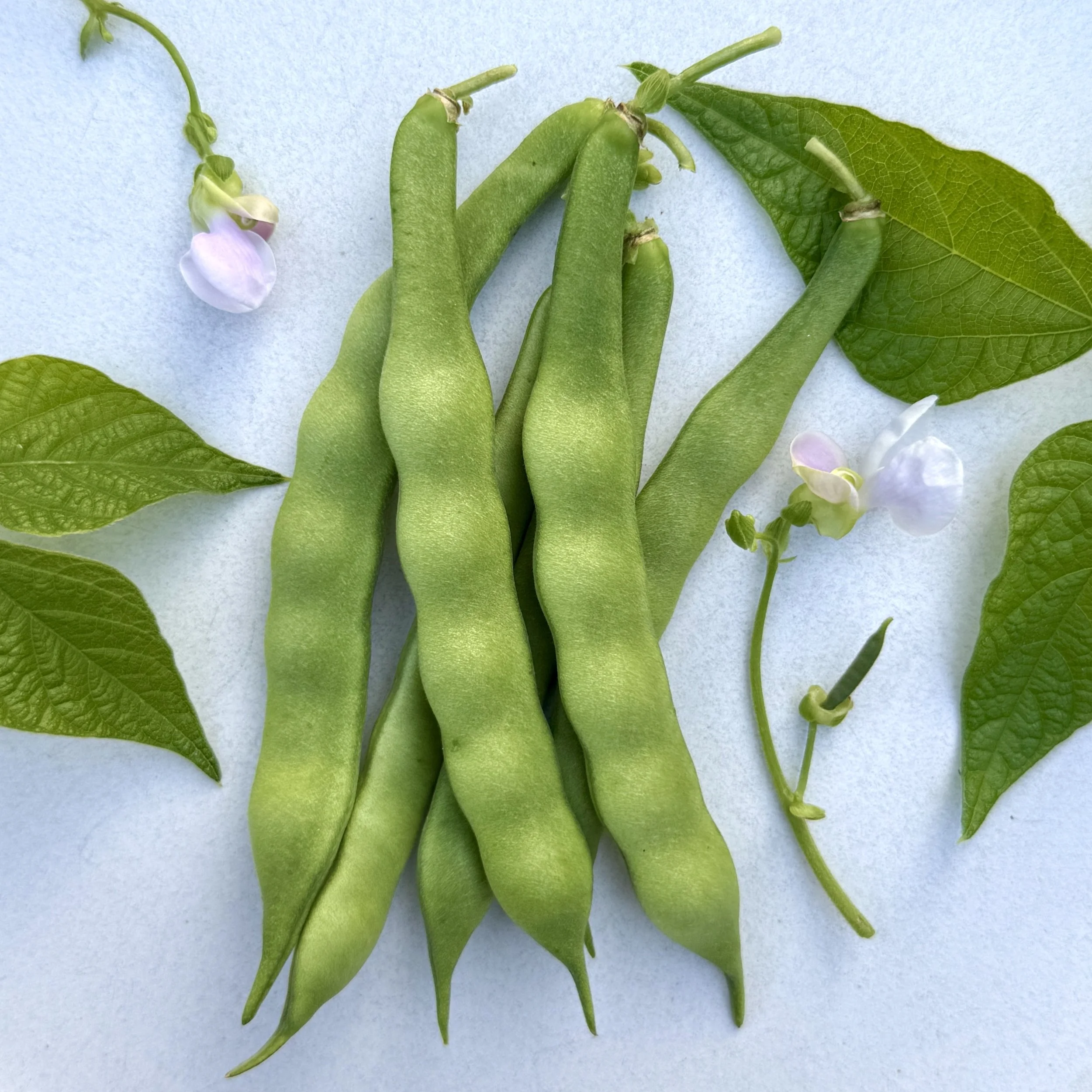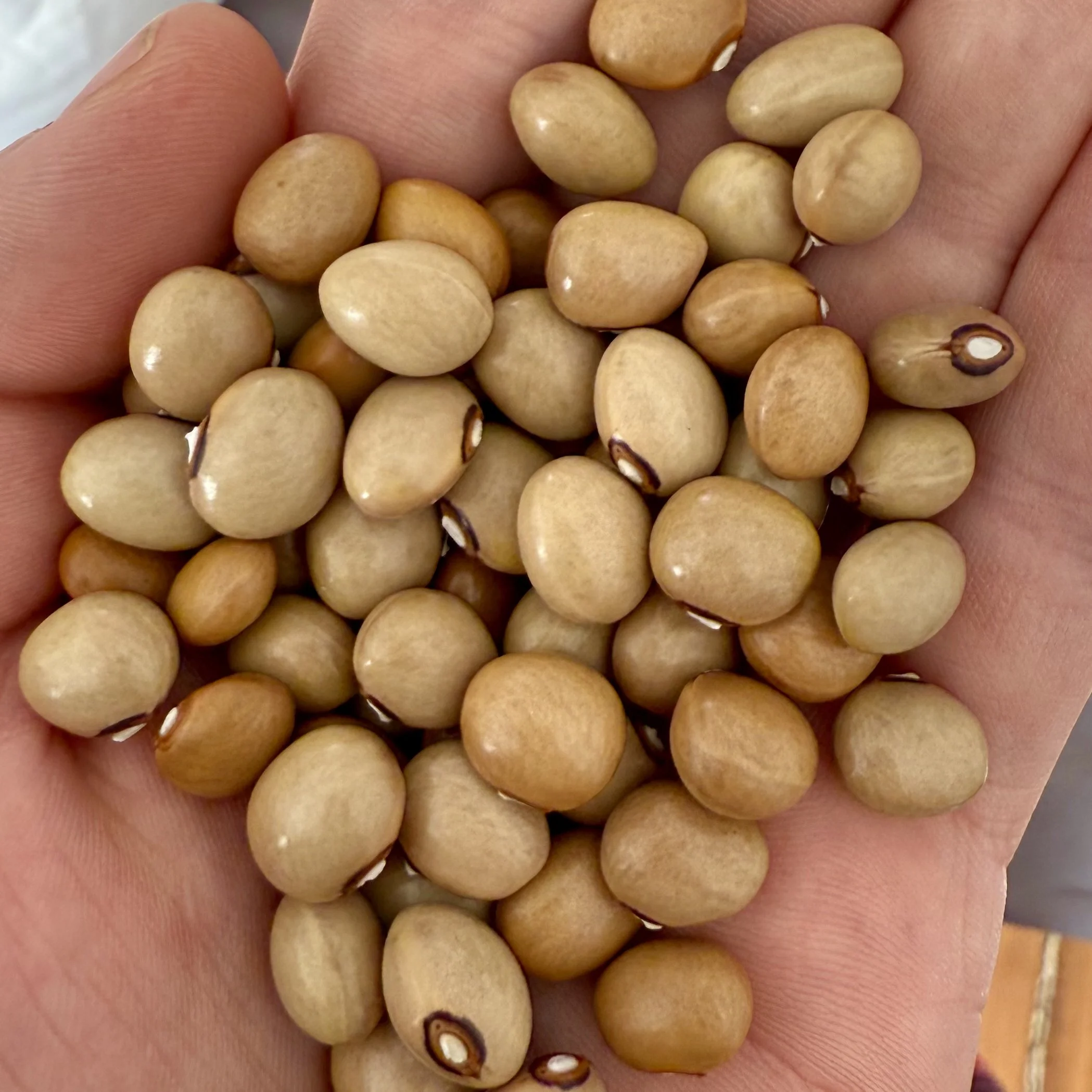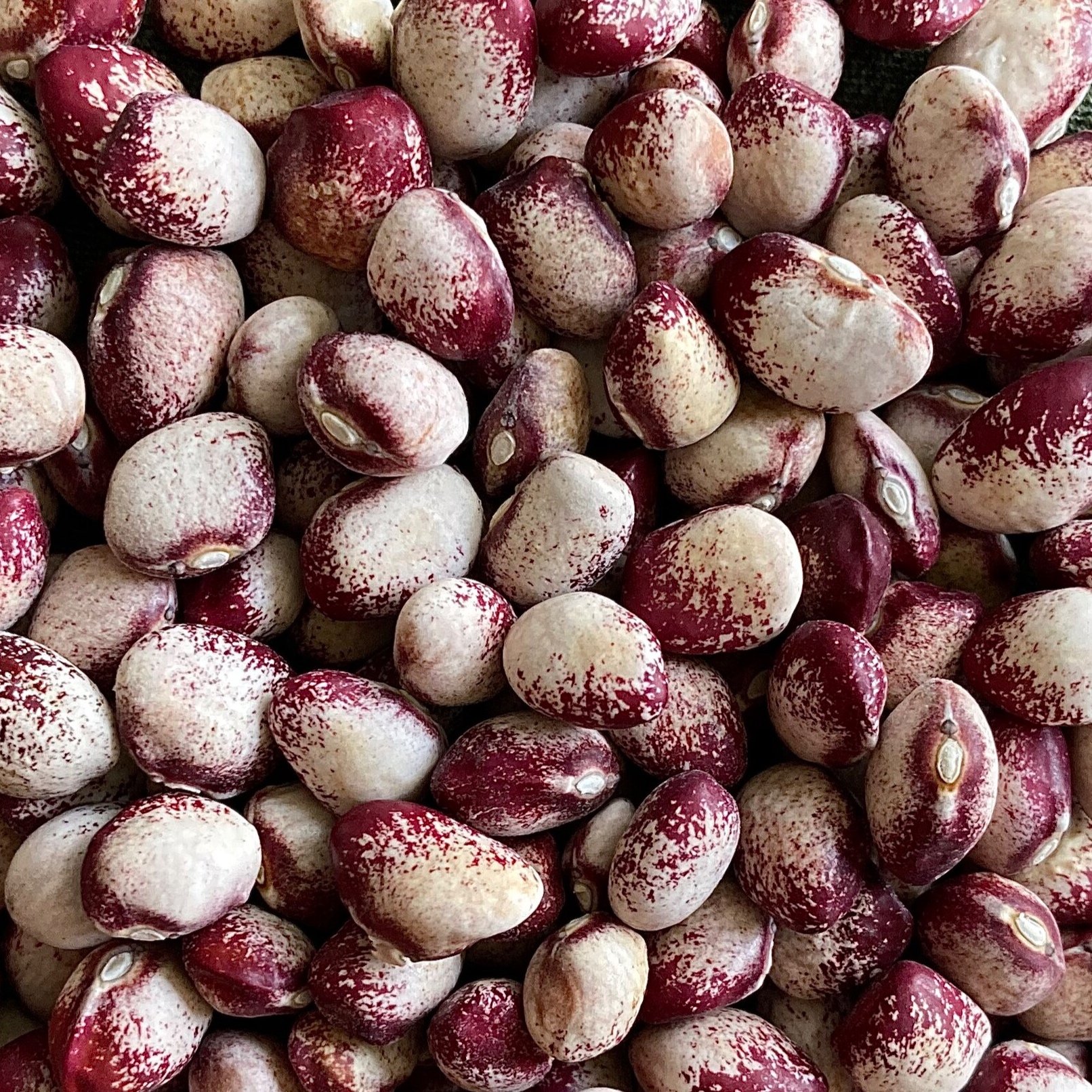 Image 1 of 2
Image 1 of 2

 Image 2 of 2
Image 2 of 2



Bean, Carver
Product Description: (Phaseolus vulgaris) This heirloom snap bean is both productive and impressively flavorful, yet nobody seems to know where it came from. We usually refrain from offering varieties until there’s a complete story to tell but some rules are meant to be broken.
All that is known of the Carver bean is the name of the man who grew it — Jack Carver of Epping, NH. In the 1970s, Epping locals knew this variety simply as “Jack’s beans” and many still remember them fondly today. Jack’s surviving friends and family all have varying accounts of where he first obtained the beans. One claimed they have been grown in NH since before the Civil War, another that Jack brought them over from the Midwest, and the third believed they were passed down by Jack’s father in Milo, Maine.
The plants are vigorous (climbing 8-10 feet high) and produce reliable yields of tender green pods. When mature, the seeds are tan-brown in color and notably plump, very similar in shape to the old True Red Cranberry bean once grown by the Abenaki. That resemblance was immediately apparent when the Piscataqua Seed Project first offered us the seeds (among the last in existence at the time), raising the question of whether this variety could be a lost New England heirloom with indigenous roots, as True Red Cranberry once was.
The University of New Hampshire will soon be conducting a DNA test in hopes of answering this exact question. Piecing together the story of the Carver bean is still a work in progress with uncertain success but we’re making it available anyway, in hopes that you can help write the next chapter, at the very least. Pole habit. 25 seeds per packet.
Growing Information: Direct seed in full sun after all danger of frost has passed. Sow your beans 2.5 cm (1 inch) deep and 15 cm (6 inches) apart at the base of a trellis. Guide the vines up the trellis as they grow taller. For fresh snap beans, harvest frequently to optimize yield. For dry beans, allow the entire plant to die back and dry until the pods are brown and brittle.
Make sure that your plants are receiving adequate airflow during this time to prevent excessive moisture and fungal growth. A small amount of spotting on the outside of drying pods is completely normal and will not affect the quality of the beans within. Once dry, harvest the pods and crack them open. Sort out any beans that are damaged or showing signs of rot then store your harvest in a cool, dry place until use. 100 days to maturity.
How To Save Bean Seeds
Allow the plant to dry out completely. Mature pods will be brown and brittle. Make sure that your plants are receiving adequate airflow to prevent excessive moisture and mold growth throughout the drying process. However, a small amount of mildew spotting on the outside of drying pods is completely normal and has no reason for concern. Once dry, harvest the seed pods and crack them open. Sort out any damaged, misshapen, or rotting beans. Continue the drying process if necessary then store them in a cool, dry place.
Product Description: (Phaseolus vulgaris) This heirloom snap bean is both productive and impressively flavorful, yet nobody seems to know where it came from. We usually refrain from offering varieties until there’s a complete story to tell but some rules are meant to be broken.
All that is known of the Carver bean is the name of the man who grew it — Jack Carver of Epping, NH. In the 1970s, Epping locals knew this variety simply as “Jack’s beans” and many still remember them fondly today. Jack’s surviving friends and family all have varying accounts of where he first obtained the beans. One claimed they have been grown in NH since before the Civil War, another that Jack brought them over from the Midwest, and the third believed they were passed down by Jack’s father in Milo, Maine.
The plants are vigorous (climbing 8-10 feet high) and produce reliable yields of tender green pods. When mature, the seeds are tan-brown in color and notably plump, very similar in shape to the old True Red Cranberry bean once grown by the Abenaki. That resemblance was immediately apparent when the Piscataqua Seed Project first offered us the seeds (among the last in existence at the time), raising the question of whether this variety could be a lost New England heirloom with indigenous roots, as True Red Cranberry once was.
The University of New Hampshire will soon be conducting a DNA test in hopes of answering this exact question. Piecing together the story of the Carver bean is still a work in progress with uncertain success but we’re making it available anyway, in hopes that you can help write the next chapter, at the very least. Pole habit. 25 seeds per packet.
Growing Information: Direct seed in full sun after all danger of frost has passed. Sow your beans 2.5 cm (1 inch) deep and 15 cm (6 inches) apart at the base of a trellis. Guide the vines up the trellis as they grow taller. For fresh snap beans, harvest frequently to optimize yield. For dry beans, allow the entire plant to die back and dry until the pods are brown and brittle.
Make sure that your plants are receiving adequate airflow during this time to prevent excessive moisture and fungal growth. A small amount of spotting on the outside of drying pods is completely normal and will not affect the quality of the beans within. Once dry, harvest the pods and crack them open. Sort out any beans that are damaged or showing signs of rot then store your harvest in a cool, dry place until use. 100 days to maturity.
How To Save Bean Seeds
Allow the plant to dry out completely. Mature pods will be brown and brittle. Make sure that your plants are receiving adequate airflow to prevent excessive moisture and mold growth throughout the drying process. However, a small amount of mildew spotting on the outside of drying pods is completely normal and has no reason for concern. Once dry, harvest the seed pods and crack them open. Sort out any damaged, misshapen, or rotting beans. Continue the drying process if necessary then store them in a cool, dry place.





